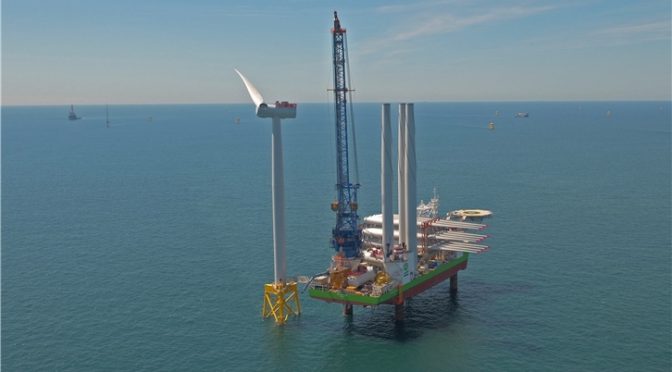Iberdrola has received the final environmental impact statement for its ‘Vineyard Wind 1’ offshore wind farm, which with a capacity of 800 MW will be the first large-scale project of this technology in the United States.
The declaration of the Office of Ocean Energy Administration (BOEM) for the wind power project with wind turbines is the final step before the last approval required for the construction of the park to begin for Avangrid, the US subsidiary of Iberdrola.
In this way, the government of new President Joe Biden accelerates a project that is key to the development of offshore wind power in the country. With this new step taken in the processing, the final permit for the offshore wind farm will be within a month.
The project, whose planned investment amounts to some 2,800 million dollars (about 2,400 million euros), belongs to Vineyard Wind, the company owned by Avangrid and Copenhagen Infrastructure Partners (CIP).
The CEO of Avangrid, Dennis V. Arriola, highlighted that this authorization is “one step closer to realizing this historic clean energy project and delivering profitable clean energy, thousands of jobs and billions of dollars in economic benefits for Massachusetts”.
“The comprehensive review by the BOEM of Vineyard Wind 1 ensures that both the project and the offshore wind industry are well positioned for long-term success,” he added.
This statement is a comprehensive study conducted by the US Administration to assess the potential environmental impacts of the proposed project.
Operational in 2023
With the issuance of the impact statement, Vineyard Wind confirmed that the project is still on track to reach financial close in the second half of this year and begin delivering clean energy to Massachusetts in 2023.
Located 15 miles offshore from Martha’s Vineyard, it will be the first large-scale offshore wind farm in the United States. It will supply enough electricity to power more than 400,000 homes and businesses in the Commonwealth of Massachusetts and create 3,600 full-time equivalent work hours (FTE).
It will also reduce electricity rates by 1.4 billion dollars (about 1,175 million euros) in its first 20 years of operation, and is expected to reduce carbon emissions by more than 1.6 million tons per year.
Awarded in 2018, the ‘Vineyard Wind 1’ offshore wind farm was originally scheduled to be operational in 2022, although the lock on environmental permits encountered by the Trump Administration caused it to register delays in its schedule.
At the end of February, on the occasion of the presentation of 2020 results, the president of Iberdrola, Ignacio Sánchez Galán, already highlighted that the change in the United States Administration, with the arrival of Joe Biden, had “accelerated” the development of marine facilities, blocked in the last part of the government of Donald Trump.
“They have ambitious goals and we are conducting negotiations with the Administration, since they are aware that they have to allow us to work to accelerate these projects,” he said.
In addition, he appreciated raising the tax credits (ITC) for the ‘Vineyard Wind 1’ project from the expected 18% to 30%, and called for “greater visibility” for these credits.
Offshore wind in the USA
In addition to this offshore wind farm, Iberdrola is a partner in ‘Park City Wind’, an 800 MW project in Connecticut State waters, as well as in additional lease areas off the Massachusetts and Rhode Island coasts to deliver up to 3,500 MW .
Likewise, the subsidiary of the energy company in the United States is also developing ‘Kitty Hawk’, which has a potential of 2,500 MW in Virginia and North Carolina waters.


